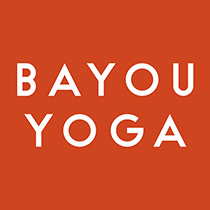How to Avoid Injury in Chaturanga by Creating Stability
How to Avoid Injury in Chaturanga
Chaturanga Dandasana or Four Limbed Staff Pose can make some students and seasoned teachers cringe at its very utterance. It’s the pose that yogis love to hate, and one of the poses that we as teachers see students perform incorrectly or half-heartedly (or half-assed, if we’re being honest). But the truth is– the STRUGGLE IS REAL. It’s real for even the most seasoned instructor, who chances are, ran into a snag here and there because of overuse, fatigue, and/or improper alignment in their own bodies when performing this challenging pose.
So why do injuries occur during chaturanga?
Have you ever counted how many chaturangas are in a vinyasa flow class? Chances are there’s more than three; chances are you could have more than ten. And that’s ok, if you’re performing them properly. The purpose of this pose is to build strength and stability in the core, shoulders and arms, and the challenge of holding your body weight in a hovered position just inches above the ground without losing your cool increases your ability to focus throughout your physical practice. There’s a reason why it’s an essential part of the vinyasa tradition and is a crucial element of surya namaskar A and B.
But when we repeatedly perform a pose incorrectly, we risk overtaxing our joints. Misaligned chaturanga can lead to shoulder strain and rotator cuff injuries as well as neck pain and low back pain. Doing a pose incorrectly over and over again creates a significant potential for repetitive motion injuries, such as rotator cuff, shoulder and wrist injuries. So if you’re looking to gain mobility from your yoga practice, but you’re not taking the time to ensure that you perform the pose with proper focus, alignment, and modifications, then you actually run the risk of impinging your mobility.
And if you’re not varying this sequence and you’re being repetitive in this type of motion in other activities, it’s just adding fuel to the fire. As always, in yoga, the key is awareness and to be in tuned with your body and to be aware when the asana becomes a pain-in-the-asana.
What are some of the common misalignments that we see?
Because we tend to dislike chaturanga dandasana, we often get stuck in our heads about it being too hard or we attach feelings of dislike to the pose without paying attention to the pose as we perform it. Often times, we rush right through it just so we can move on the next pose- the pose that we think is easier and that doesn’t challenge us as much. But in rushing the pose, we remove attention to detail, and in this pose, the detail really is in alignment and engagement. First of all, this pose requires the coordination of multiple muscle groups, including chest muscles (pectoralis major and minor), the main muscle that joins the front of the shoulder to the upper arm (anterior deltoid) and several muscles that flex the trunk or hips (including rectus abdominis, obliquus abdominis, iliopsoas, and rectus femurs). What happens when that coordination is rushed? In short, we create instability.
Here are a few common misalignments that we see:
- Hands are too close to the shoulders, causing the elbow to bend at a sharper than 90 degree angle.
- Or in other words, the shoulder dips below the elbow, bearing a lot more weight than the shoulder was ever designed to do.
- Bodies collapse all the way to the ground and/or the pose has a saggy back.
- “Lazy” chaturangas that barely bend at the elbow for a short breath before transitioning into upward dog.
- Elbows that fall outward, instead of hugging against the body.
- Attempting to hold the body weight without adding support through the use of our knees or blocks.
Of course, there are other ways to create misalignment issues in this pose that we all love to hate, but these are the repeat offenders. And repeat offenders are habitual offenders, and habitual offenders eventually lead to incapacitation with chaturanga.
What do we do then to avoid misalignment?
First, practice awareness. Be present in the pose instead of rushing or fighting through it. Pay attention to the sensations that you experience in your body, then make adjustments. Focus on creating stability using the centering and grounding techniques that we’ve discussed this month.
Use your peripheral vision, notice where your elbows are located. Use your internal bandhas to ensure that your core is engaged. Notice if you’re struggling to maintain alignment between your elbows and shoulders or if your back is swaying. Is it? That’s ok! You’ve got tools that can help you in this position.
What tools?
Well, first of all, ain’t no shame in the knee game. In the yoga studio, there’s nothing wrong with taking a knee to assist you as you build the strength to perform this pose properly. Next time someone tells you that you should be able to hold your own body weight without any assistance– turn that voice off and pay attention to your internal voice. By listening to that voice and making additional modifications, you’re ensuring a paved way for future opportunities to bear your own body weight. (Take it from us– we’ve experienced the other side of this equation and there’s nothing more frustrating to a power yogi than to fear that you’ll never get to perform your beloved poses again).
Also, next time you hit the mat, grab two blocks so that you have these tools easily accessible as you flow.
What do I do with the blocks?
Place two yoga blocks at their highest height shoulder distance apart. Setting your hands behind the blocks, step back into Plank (or modified Plank with your knees down) with your shoulders over your wrists. Firm your core and legs, and shift your shoulders forward.
Lower your shoulder heads to the blocks but resist resting completely onto the blocks.
Practice building strength here by pressing down into your hands and lifting your shoulder heads back up an inch or two away from the blocks, or try lowering down to the blocks and hovering just above them without touching your shoulders to them.
You can always put your knees down to build the awareness and strength necessary to perform Chaturanga Dandasana.

Or try placing one single block under your chest. Come onto all fours in a table top position and place the block under your chest. You’ll have to experiment with the height of the block to determine what works best with your proportions and current strength level. Bend your elbows 90 degrees, rest your sternum on the block, and straighten your legs. Practice using the block for extra support and/or hovering just an inch to gradually increase your strength and awareness.
Most of all, it’s important to listen to your body. If you increase your awareness on your mat, you’ll increase your own awareness of your body, and you’ll build the strength that you need to support yourself –with or without props. When we are properly supported, then we create the stability that we really need to thrive. And, isn’t that truly how yoga shows up off the mat, anyway?

